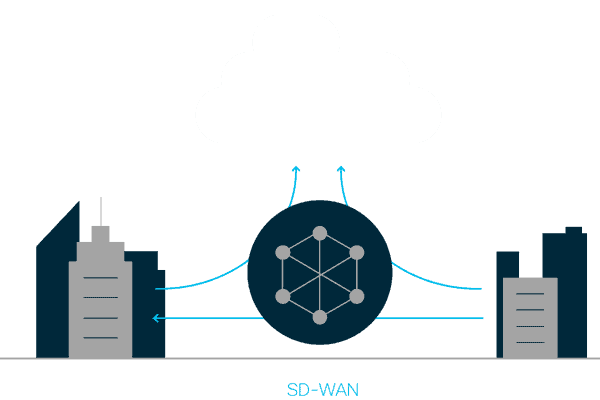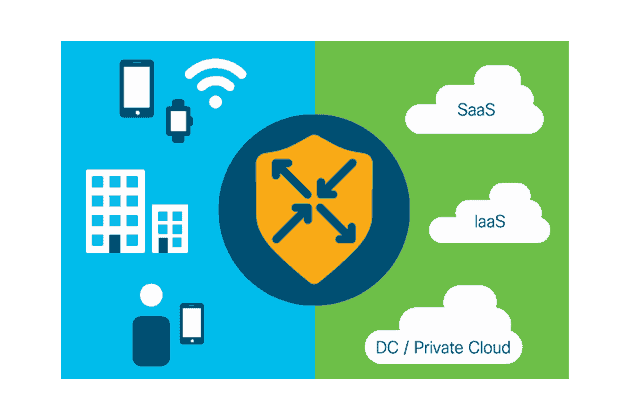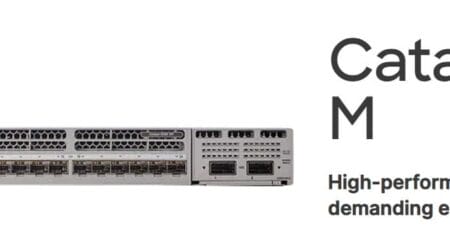What are the benefits of the SD-WAN solution? Learn about the power of software-defined networks on the WAN.
According to IDC, most companies plan to choose their SD-WAN solution before the end of 2019. 90% of companies are going to adopt the cloud, either as infrastructure, cloud applications or some cloud service and this is a great challenge. SD-WAN solutions can help you on this path.
In this article, discover what are the main benefits that a Cisco SD-WAN solution can bring to your company.
The flow of data and devices is exceeding the limits of the traditional WAN architectures, making it nearly impossible for WAN networks keep up.
With the power of software-defined networks on the WAN , businesses can improve performance, reduce costs, and stay protected.
SD-WAN is a software-driven solution that directs traffic, maintains application performance, and adapts to changing conditions without direct supervision from the IT manager. SD-WAN is a technology that helps simplify this adoption of the cloud.
Next we will explain what SD-WAN is and how it helps companies modernize their network, improve the user experience with applications, reduce costs and integrate with the cloud while increasing security.

How do you work in traditional architectures?
In traditional network architectures, sites send all traffic from remote offices to the datacenter through an MPLS network provided by an operator. From the datacenter, this traffic destined for the Internet goes through a centralized firewall. What’s happening? That with this massive adoption of the cloud what we are seeing is that between 50 and 80% of the traffic of these remote locations is destined for the cloud, therefore, it makes no sense to pass all this traffic through an architecture centralized firewall in the datacenter. On the one hand, we waste very expensive bandwidth resources and on the other hand, we are adding unnecessary latency to applications. All of this influences the user experience.
A possible solution to this problem is to enable direct access to the Internet to each of the remote delegations and not have to pass this traffic through the datacenter. We can use fiber, adsl, 4G … which gives us a lot of flexibility. But this poses certain security risks to consider, in addition to some operational and configuration complexity.

What is the solution?
The solution is SD-WAN, since it allows to optimize the experience of the applications that go to the datacenter through the MPLS but also allows these accesses to be enabled in each delegation.
What are the benefits of the SD-WAN solution?
1. Ease of operation and management.
Management from a simple and centralized console that can reside in the customer facilities or in the cloud. This will provide us with flows easy to use for setup and for detection and resolution of network problems.
2. Rapid site deployment and cost reduction.
SD-WAN allows automated provisioning of equipment and independence from the transport layer. We discuss these two characteristics, self-provisioning allows you to open a new headquarters without moving a technician, simply by connecting the computer to the Internet the computer will auto provision itself in a few seconds. For another On the other hand, the independence of the transport layer, gives us the option of having connection with 4G from day one and not having to wait for the operator to provide us the requested access MPLS or fiber.
3. Optimization of the user experience.
SD-WAN chooses automatically and completely transparent for the user the transport that best suits the applications we are using. It takes into account latency parameters, jitter, packet losses … Voice traffic that requires certain maximum latencies is not the same as video traffic, which is more permissive with latencies but requires packet losses Very low.
SD-WAN provides analytics and thanks to them we obtain greater visibility of the entire network, of the bottlenecks that we may have in each of the delegations and we will be able to optimize it and anticipate any problem that may arise in the future so that they do not impact our business.
4. Simplify the migration process to the cloud (IaaS / SaaS)
Optimization of applications and workloads.
Facilitates integration with the cloud at two different levels. The first one helps companies to adopt infrastructure solutions as a service in the cloud that is, moving workloads to the public cloud either Amazon, Azure, Google Cloud… in a simple way. The second level refers to the optimization of applications in the cloud that is, if companies want adopt SaaS such as Office 365, Salesforce, Dropbox …
5. Protection against threats. Seguridad integrada
SD-WAN integrates security into the routers found at the headquarters. Integra security at the application firewall level, IPS or protection system against intrusions, URL filtering and Cloud security with Cisco Umbrella. Thanks to all this security functionality integrated into the router itself, we will be able to enable security in each internet access of each delegation.
More information on SD-WAN technology
https://www.cisco.com/c/es_es/solutions/enterprise-networks/sd-wan/what-is-sd-wan.html?CCID=cc000005
¿Qué es SD-WAN?










